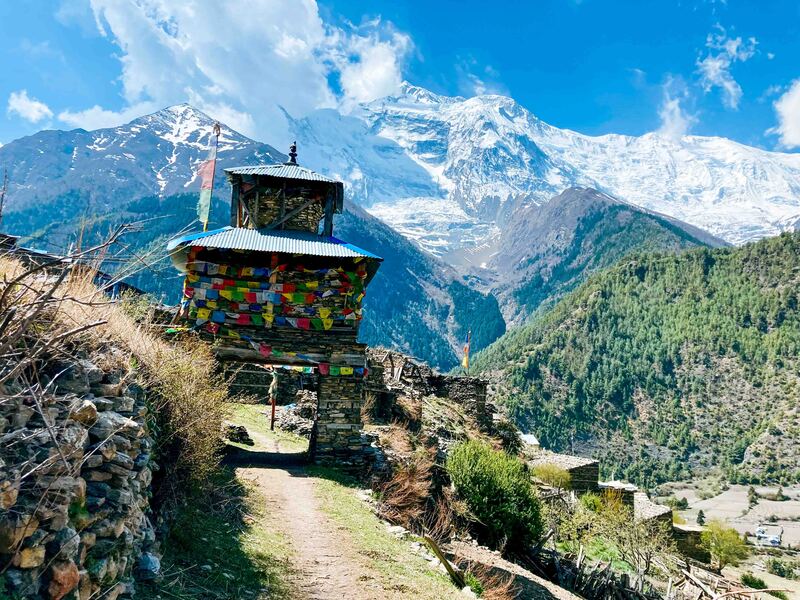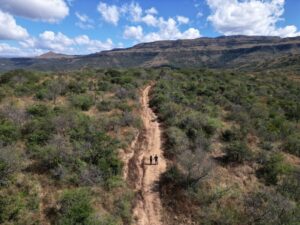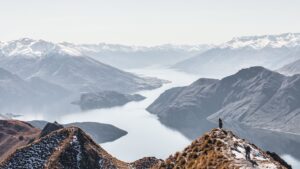Nepal is a beautiful country nestled in the Himalayan mountain range blessed with some of the best hiking and scenery in the world. Home to epic treks such as the Annapurna Circuit and Everest Base Camp, it is a dream location for adventurers. Aside from its natural beauty, Nepal is a haven of fusion cultures and cuisine, mixing up the most delicious parts of India and China. In addition to mountaineering, Nepal is also one of the best places to study Buddhism and yoga. What makes Nepal exceptional though is its people, some of the friendly and kindest we have encountered anywhere in the world. The Himalayas will surely steal your breath and the Nepalese people will steal your heart.
General tips
When/where to go
Best time to visit: If you are visiting Nepal for trekking, the best time to visit is Autumn (September-November) or Spring (April-May) when the weather is drier and warmer.
Summertime is full of monsoons, so best to avoid. Winter can be snowy up in the mountains but brings cooler weather to cities at lower elevations.
Where to go:
- Kathmandu: Busy urban capital, crowded, chaotic, good food.
- Pokhara: Phewa Lake, chill vibes, hippy, jump-off point for Annapurna Circuit, Manaslu Circuit, and Poon Hill.
- Solukhumbu: Jump off point to Everest Base Camp.
- Boudhnath: Buddha’s birthplace, pilgrimage site, come to study Buddhism.
- Terai: Southern Nepal, Chitwan National Park, jungles, rhinos, tigers, wildlife.
Getting Around
Transportation: Most international flights will fly into Kathmandu. Talk to your hotel about arranging for airport pickup in advance as the airport can be pretty chaotic.
To get from Kathmandu to other cities such as Pokhara, you can either take short domestic flights or a bus. Domestic flights can be booked by tour agencies and are usually in the $60-100 range.
Buses range from luxury tourist buses (which come with AC and recliner seats) to public buses (where you may be standing or sitting on the floor). If traveling between cities, we recommend booking a seat on a luxury bus in advance with any tour agency, as rides are very long and very bumpy.
For transportation within the city, taxis are readily available. Just flag one down as you would in NYC.
Electricity: Power outages are not uncommon in Nepal. We would sometimes experience multiple within a day. Bring a portable charger or power bank if trekking as not all guest houses provide charging outlets.
Electricity is 230V/50 cycles. 120V appliances from the USA will need a voltage converter. Outlets are confusing and inconsistent throughout Nepal. Here are some of the outlets we encountered:
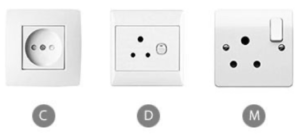
WiFi: Many restaurants and hotels in Kathmandu and Pokhara had readily available WiFi. Power outages can make this service unreliable at times, especially when it rains. Not the fastest connections, especially as you get more remote.
Language
Language: The official language in Nepal is Nepali, but there are 123 languages spoken throughout the country. Nepalese dialects can vary from region to region, and many Nepalese can speak some Hindi as well. We were surprised by how much of the population is fluent in English, making Nepal an easier country to navigate for tourists.
Here are some basic phrases that may be useful:
- Namaste: Hi/hello
- Dhanyabaad: Thank you
- Maaf pau: I’m sorry
- Tapai lai kasto chha?: How are you?
- Tapai ko naam ke ho?: What’s your name?
- Mero naam *** ho: My name is ***
- Bhariya: Porter
- Baato: Road or trail
- Malai Bhok lagyo: I am hungry
- Malai Pyaas Lagyo: I am thirsty
- Malai Sancho bhayena: I feel sick
- Malai Thakai Lagyo: I am tired
- Hoon chha: Yes or OK
- Hoon na: No/not OK
- Ma haraye chhu: I think I am lost!
- Thik cha: Everything is okay
- Zoom zoom or jum jum: Let’s go!
Check out more Nepali phrases for travelers at World Nomads.
Food/Money
Money: The official currency of Nepal is the Nepalese Rupee and at the time of our travel (Spring 2022) $1 USD = ~123 NPR.
We usually avoid currency exchanges abroad as they can often offer lower exchange rates and sometimes surprise you with hidden fees.
ATMs often give the best exchange rate, but not every ATM in Nepal accepts foreign cards and most will only allow you to pull 10,000-30,000 NPR at a time. Look for “ATM Lounges” which will house several machines from a variety of banks. Nabil Bank ATM worked with our Capital One debit cards.
Tipping: It is expected to tip your guide or porter generously if trekking. Tipping otherwise appears to be appreciated but not expected. Some restaurants will include a 10% service charge, so check your bill to see if it was already added.
Foods to Try:
- Daal bhaat (AKA Nepali thali): Daal (lentil soup), rice, and vegetable curry. Often served with yogurt and pickles and usually comes with free refills! Best trekking fuel.
- Momos: Steamed or fried dumplings. Try the chili version.
- Thukpa: Tibetan hot noodle soup. Can be meat-based or vegetarian.
- Seabuckthorn Juice: Found at higher elevations, this juice is made from a bush berry believed to have many natural remedy properties.
- Yak meat, yogurt, cheese: Yak products are found high up in the mountains. The yogurt was good, cheese unmemorable and we heard the meat can be chewy.
- Buckwheat: Common grain up in the mountains. Used to make pancakes and crepes.
- Tibetan bread: Fried and airy bread which is delicious in the morning with some honey.
- Paratha: Also fried bread, Indian style, usually with a layer of potatoes or chickpeas in between. Sometimes served with vegetable curry.
- Masala Chai: Popular hot beverage made of black tea mixed with spices and herbs. Usually milk-based.
- Sandheko: Spicy Newari salad made with potatoes or peanuts and seasoned with spices.
- Chaat: Chickpea snack made of spices, herbs, onions, and potatoes.
- Pani Puri or Dhai Puri: Small fried crunch balls hollowed out and filled with a mix of chickpeas, onions, and spices. Pani Puri is dipped into tamarind water and best eaten in one bite. Dhai Puri comes with yogurt.
- Lassi: A sweet or salty cold yogurt-based drink. Comes plain or with added fruits such as banana or mango.
Health/Safety
Water: The water in Nepal is considered NOT safe for drinking. Brushing your teeth and bathing in this water is fine, just don’t consume. Use a filter or buy bottled water. We travel with our Katadyn BeFree water bottle everywhere we go.
Street food: We love to eat street food! But you should always take caution to prevent catching a GI bug. Avoid anything that may have been washed in unfiltered water, such as salads or ceviche. Consuming undercooked meats, dairy, or mayo products that look like they’ve been sitting out or old refried rice products can also lead to GI illnesses. Exercise caution and choose a place that appears to be using good hygiene and prepares your food in front of you (rather than prepared beforehand).
Toilets: You will encounter both Western-style toilets and Asian squat toilets. For squat toilets, there will be a bucket of water with a scoop used for cleaning yourself and manually flushing the toilet. If you are accustomed to toilet paper, we recommend carrying your own or grabbing some napkins from the restaurant before relieving yourself. Throw toilet paper in the waste basket, not in the toilet. Carry your own hand sanitizer as soap is not always available.
Safety: We felt extremely safe during our Nepal trip. In general, the country really seems to appreciate their visitors and we never felt in danger at any point. Always exercise caution, avoid traveling alone, flashing wealth, or wandering outside of the main parts of town.
COVID-19
At the time of our travel (Spring 2022), fully vaccinated individuals were able to enter Nepal without a COVID-19 swab.
To return to the United States, the rule remains that you must show a negative COVID19 test no more than 1 day before travel, despite vaccination status. This can be a rapid antigen (faster) or PCR test. Ask your hotel to help you arrange for a swab as navigating Nepal’s health clinics is not so easy.
map:
Check out our free Google Map of Nepal here with all of our recommendations from each of our travel guides.
